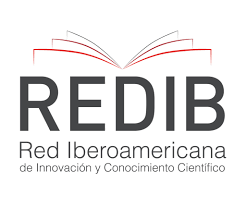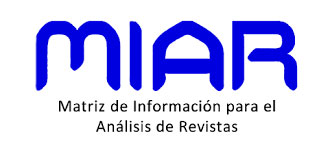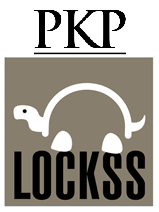Análisis bibliométrico del Sector no Lucrativo
DOI:
https://doi.org/10.51743/ihering.13Keywords:
Nonprofit Organizations,, Nonprofit Organizations, Nonprofit Sector, Bibliometric Analysis, Co-occurrence Analysis, Scientific mapsAbstract
The growing interest in the nonprofit sector, and the organizations that set it up, makes it essential to analyze the state in which this thematic area is located, what evolution it has had, what issues it addresses and what are the possible future lines of research that may justify later studies. This study is based on bibliometric to evaluate performance and productivity, and by extracting data we classify the most outstanding research topics in the area of study of the Non-Profit Sector. The objective of this study is to obtain a better view of the current situation and possible more powerful lines of research within the area. Analysing the period from 1946 to 2018, we can corroborate the growing interest of this subject within the scientific field, establishing as a motor theme or with greater impact in the area, the study of non-profit organizations and within that topic study the variables that set up this area such as Administration, Efficiency, Governance, Accounting and Corporate Governance.
Downloads
Global Statistics ℹ️
|
418
Views
|
250
Downloads
|
|
668
Total
|
|
References
Aguiar Fernández, F.X. (2006). Tercer Sector: análisis, desafíos y competencias desde el trabajo social. Acciones e Investigaciones Sociales, Nº Extra 1, 439.
Bordons, M; Zulueta, M. (1999). Evaluation of scientific activity through bibliometric indicators. Revista Española de Cardiología, 52(10), 790–800. DOI: https://doi.org/10.1016/S0300-8932(99)75008-6
Callon, M., Courtial, J. P., & Laville, F. (1991). Co-word analysis as a tool for describing the network of interactions between basic and techno- logical research: The case of polymer chemistry. Scientometrics, 22(1), 155–205. DOI: https://doi.org/10.1007/BF02019280
Chaves, A; Monzón, J.L. (2001). Economía Social y Sector no Lucrativo: Actualidad científica y perspectivas. CIRIEC-España .Revista de eco- nomía pública, social y cooperativa, Nº 37. 66-74.
Cobo, M. J., López-Herrera, A. G., Herrera-Viedma, E., & Herrera, F. (2011). An approach for detecting, quantifying, and visualizing the evolution of a research field: A practical application to the fuzzy sets theory field. Journal of Informetrics, 5(1), 146–166. DOI: https://doi.org/10.1016/j.joi.2010.10.002
Cobo, M. J., López-Herrera, A. G., Herrera, F., & Herrera-Viedma, E.(n.d.). A note on the ITS topic evolution in the period 2000–2009at T-ITS. IEEE Transactions on Intelligent Transportation Systems, 13(1), 413– 420. DOI: https://doi.org/10.1109/TITS.2011.2167968
Cobo, M. J., López Herrera, A. G., Herrera Viedma, E., & Herrera, F.(n.d.). SciMAT: A new science mapping analysis software tool. Journal of the Associtation for Information Science and Technology, 63(8), 1609–1630. DOI: https://doi.org/10.1002/asi.22688
Cobo Martín, M. J. (2012). SciMat: herramienta software para el análisis de la evolución del conocimiento científico. Propuesta de una metodolo- gía de evaluación. Tesis Doctoral. Universidad de Granada.
Fonseca, D., de Melo, F., de Melo, B. C. (2018). Behavioral Economics and Behavioral Finance: a bibliometric analysis of the scientific fields. Journal of Economic Surveys. doi:10.1111/joes.12262. DOI: https://doi.org/10.1111/joes.12262
Granados, M.L.; Hlupic, V.; Coakes, E.; Mohamed, S. (2011). . Social enterprise and social entrepreneurship research and theory: A bibliometric analysis from 1991 to 2010. Social Enterprise Journal, Vol. 7 Issue: 3, pp.198-218. DOI: https://doi.org/10.1108/17508611111182368
Martínez, M. A., Cobo, M. J., Herrera, M., & Herrera-Viedma, E. (2015). Analyzing the Scientific Evolution of Social Work Using Science Mapping. Research on Social Work Practice, 25(2), 257–277. DOI: https://doi.org/10.1177/1049731514522101
Martínez, M. A. U., Díaz, M. U., Lima, A. I., Herrera, M., & Herrera- Viedma, E. (2017). Un análisis bibliométrico de la producción acadé- mica española en la categoría de Trabajo Social del Journal Citation Report. Cuadernos de Trabajo Social, 2014, 27(2), 429-438. DOI: https://doi.org/10.5209/rev_CUTS.2014.v27.n2.44662
McCain, K. W. (1990). Mapping authors in intellectual space: A technical overview. Journal of the American Society for Information Science, 41(6), 433. DOI: https://doi.org/10.1002/(SICI)1097-4571(199009)41:6<433::AID-ASI11>3.0.CO;2-Q
Medina, C., & Leeuwen, T. N. (2012). Seed journal citation network maps: A method based on network theory. Journal of the Association for In- formation Science and Technology, 63(6), 1226–1234. DOI: https://doi.org/10.1002/asi.22631
Morris, S. A., & Van der Veer Martens, B. (2008). Mapping research spe- cialties. Annual Review of Information Science and Technology, 42(1), 213–295. DOI: https://doi.org/10.1002/aris.2008.1440420113
Nadal Ariño, J. (2013). El fenómeno de las fundaciones en España. Participación cívica y filantropía. Mayo-Junio 2013. Nº 872
Noyons, E. C., Moed, H. F., & Luwel, M. (1999). Combining mapping and citation analysis for evaluative bibliometric purposes: A bibliometric study. Journal of the Association for Information Science and Tech- nology, 50(2), 115. DOI: https://doi.org/10.1002/(SICI)1097-4571(1999)50:2<115::AID-ASI3>3.0.CO;2-J
Peñalosa Esteban, Isabel. (2012). El ´regimen fiscal de las entidades sin fines lucrativos: Requisitos de acceso al régimen especial. Su aplicación a las fundaciones. Tesis Doctoral. Universidad Rey Juan Carlos.
Ramos Rodríguez, A. R.; Ruíz Navarro, J. (2004). Changes in the intellectual structure of strategic management research: A bibliometric study of the Strategic Management Journal, 1980–2000. Strategic Manage- ment Journal, 25(10), 981–1004. DOI: https://doi.org/10.1002/smj.397
Rodriguez Paredes,M. (2001). Las fundaciones en España: propuestas de un modelo de análisis de la información contable externa. Tesis Doctoral. Universidad Complutense
Rubio Guerrero, J.J.; Sosvilla Rivero, S. (2016). El Sector Fundacional en España. (2008-2014). Informe para el Instituto de Análisis Estratégico de Fundaciones (INAEF)
Ruiz Olabuénaga, J.I. (2001). El sector no lucrativo en España. CIRIEC-España.
Revista de economía pública, social y cooperativa, Nº 3, 51-78.
VV.AA. (2010). Anuario del Tercer Sector de Acción Social en España. Fundación Luis Vives
Ruiz Villafranca, R. (2015). El Tercer Sector de Acción social en 2015. Im- pacto de la crisis. Systeme Innovación y consultoría.
Zupic, I., & Cater, T. (2015). Bibliometric methods in management and or- ganization. Organizational Research Methods, 18(3), 429–472. DOI: https://doi.org/10.1177/1094428114562629
Downloads
Published
How to Cite
Issue
Section
License
The Fundación Universitaria Española publishing house preserves the patrimonial rights (copyright) of published works, and encourages and allows their reuse. The works are published in the electronic edition of the journal under a license "Creative Commons Attribution / Attribution-NonCommercial 4.0 International Public License - CC BY-NC 4.0", and can be copied, used, disseminated, transmitted and publicly exhibited.
The undersigned author /s partially transfer the property rights (copyright) of this work to the Fundación Universitaria Española (Spain) (NIF: G28433670), for the printed and online editions.
It also declares to have respected the ethical principles of research and to be free from any conflict of interest.

























1.png)
1.png)

1.png)
.png)
.png)

.png)
1.png)
1.png)
